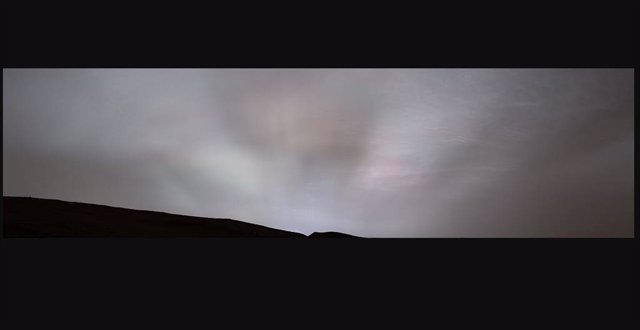March 6 () –
NASA’s Curiosity rover on Mars captured on February 2, 2023 how some rays of sunlight illuminated a bank of clouds while the ‘king sun’ set on the horizon.
These ‘sunrays’ are also known as crepuscular rays. It was the first time that the sun’s rays were seen so clearly on Mars.
Curiosity captured the scene during the rover’s latest twilight cloud survey, which builds on its 2021 observations of noctilucent, or night-glow, clouds. While most Martian clouds sit no more than 60 kilometers above the ground and are made up of water ice, the clouds in the latest images appear to be at higher altitudes, where it is especially cold. That suggests these clouds are made of carbon dioxide ice, or dry ice.
Just like on Earth, clouds provide scientists with complex but crucial information for understanding climate. Observing when and where clouds form, scientists can learn more about the composition and temperatures of the Martian atmosphereas well as on the winds that blow inside it.
The 2021 cloud survey included more images taken by Curiosity’s black-and-white navigation cameras, which provided a detailed look at a cloud’s structure as it moved. But the recent study, which began in January and will end in mid-March, relies more on the rover’s Mastcam color camera, that helps scientists see how cloud particles grow over time.
In addition to the image of the sun’s rays, Curiosity captured a set of colored feather-shaped clouds on January 27. When illuminated by sunlight, certain types of clouds can create a rainbow-like spectacle called iridescence.
“When we see iridescence, it means that the particle size of a cloud is identical to that of its neighbors in every part of the cloud,” he explains. it’s a statement Mark Lemmon, an atmospheric scientist at the Boulder Institute of Space Sciences in Colorado. “By looking at the color transitions, we see that the size of the particles is changing throughout the cloud. That tells us about the way the cloud is evolving and how its particles are changing size over time.”
Curiosity captured both the sun’s rays and the iridescent clouds as panoramas, each of which was composed from 28 images sent back to Earth. The images have been processed to bring out the highlights.











![[Img #74674]](https://thelatestnews.world/wp-content/uploads/2024/12/Santiago-Ramon-y-Cajal-The-promoter-of-modern-neuroscience-300x200.jpg)